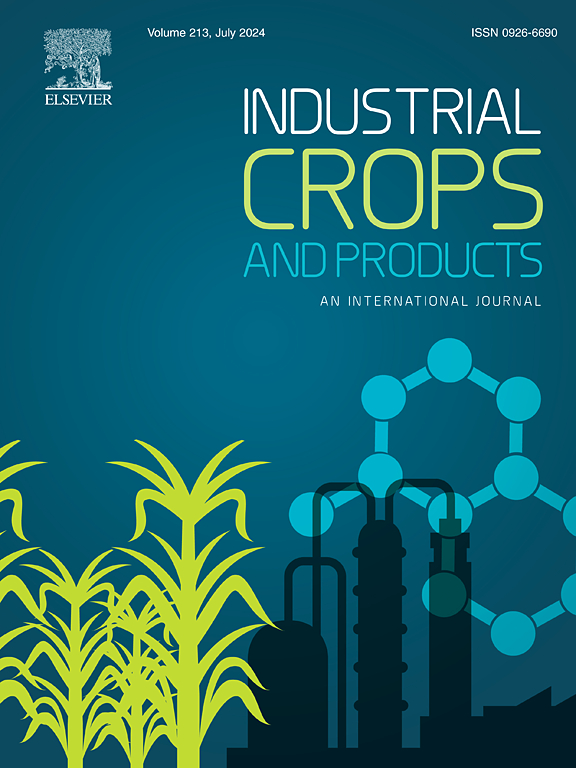Efficient fractionation of Chinese fir lignocellulose using acidified deep eutectic solvent with downstream valorization into value-added cellulosic nanofillers and propylguaiacol
IF 5.6
1区 农林科学
Q1 AGRICULTURAL ENGINEERING
引用次数: 0
Abstract
Fractionation of softwood lignocellulose poses challenges due to its relatively high lignin content and complex interlinkages. In this study, an acidified deep eutectic solvent (choline chloride/ethylene glycol with 1 wt% AlCl₃) was employed to effectively fractionate Chinese fir chips into cellulose-rich and lignin fractions, achieving good to excellent yields. The cellulose-rich fraction was directly valorized into lignin-containing cellulose nanofibers (LCNFs) with a high yield. The prepared LCNFs were utilized as functional nanofillers in waterborne polyurethane wood coatings (WWC), resulting in an increase in tensile strength from 15.2 ± 0.35 MPa to 18.5 ± 0.43 MPa with the optimal addition of 0.5 wt% LCNFs. Furthermore, the addition of LCNFs significantly improved the coating properties, including hardness and wear resistance. The remaining lignin in the LCNFs imparted excellent optical properties to the WWC film, imparting a warm amber hue and improved texture convexity after coating. Analysis of the lignin fractions revealed a high total content of β-O-4 linkages. Following a catalytic hydrogen transfer depolymerization process, 9.8 wt% of propylguaiacol was obtained with near-quantitative selectivity. This study highlights the effectiveness of acidified deep eutectic solvents in the refinery of softwood lignocellulose, providing a novel pathway for the production of value-added bio-based nanomaterials and chemicals.
求助全文
约1分钟内获得全文
求助全文
来源期刊

Industrial Crops and Products
农林科学-农业工程
CiteScore
9.50
自引率
8.50%
发文量
1518
审稿时长
43 days
期刊介绍:
Industrial Crops and Products is an International Journal publishing academic and industrial research on industrial (defined as non-food/non-feed) crops and products. Papers concern both crop-oriented and bio-based materials from crops-oriented research, and should be of interest to an international audience, hypothesis driven, and where comparisons are made statistics performed.
 求助内容:
求助内容: 应助结果提醒方式:
应助结果提醒方式:


